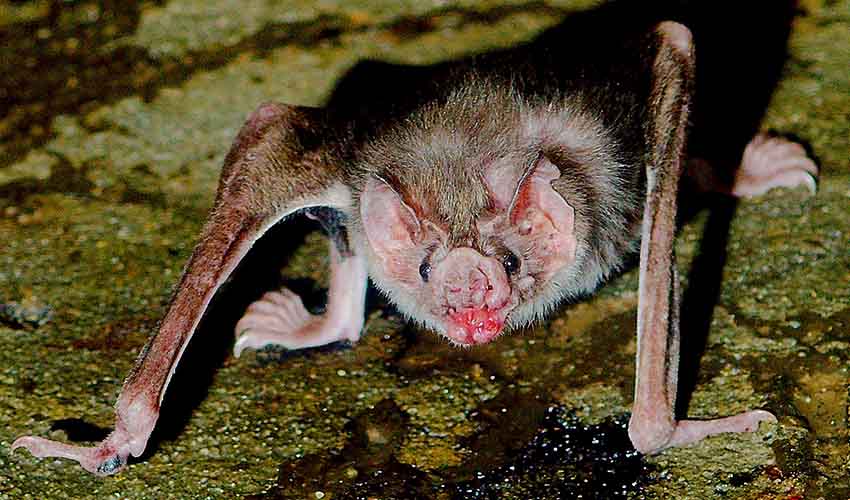Desmodus – Vampire bats
They don’t suck blood — they lap it up with their tongue
These small, nocturnal mammals live in Central and South America and are the only mammals known to feed exclusively on blood — a behavior called hematophagy. The most well-known species is the common vampire bat (Desmodus rotundus), which primarily feeds on the blood of livestock like cows, pigs, and horses. Despite their spooky reputation, vampire bats are more like sneaky surgeons than monsters — they make a tiny incision with razor-sharp teeth and lap up the blood without waking their host.
What makes Desmodus bats especially unique is their specialized adaptations. Their front teeth are so sharp they don’t even have enamel — this helps them stay razor-fine. They also have heat sensors in their nose to detect where blood flows closest to the skin. Once they’ve found the right spot, they use an anticoagulant in their saliva called draculin (yes, really!) to keep the blood flowing smoothly while they feed. And don’t worry — they take only about a tablespoon of blood, and their hosts usually don’t even notice.
Vampire bats are very social and kind to each other. They live in tight-knit colonies and will regurgitate blood to feed hungry roost-mates who didn’t get a meal that night. If a bat doesn’t eat for 2-3 nights, it can die — so this social sharing system is literally life-saving. Scientists have even observed bats “keeping score” — those who share are more likely to receive help later. It’s like a tiny vampire bat version of “paying it forward.”
They’re also super agile walkers, unlike most bats. Vampire bats can run, hop, and even jump off the ground, which is rare among bats that typically crawl awkwardly when not flying. In fact, their walking abilities are so good that researchers once compared them to spider monkeys in terms of limb coordination.
Species in this genus
Common vampire bat
Most famous — and misunderstood — of all vampire bats


